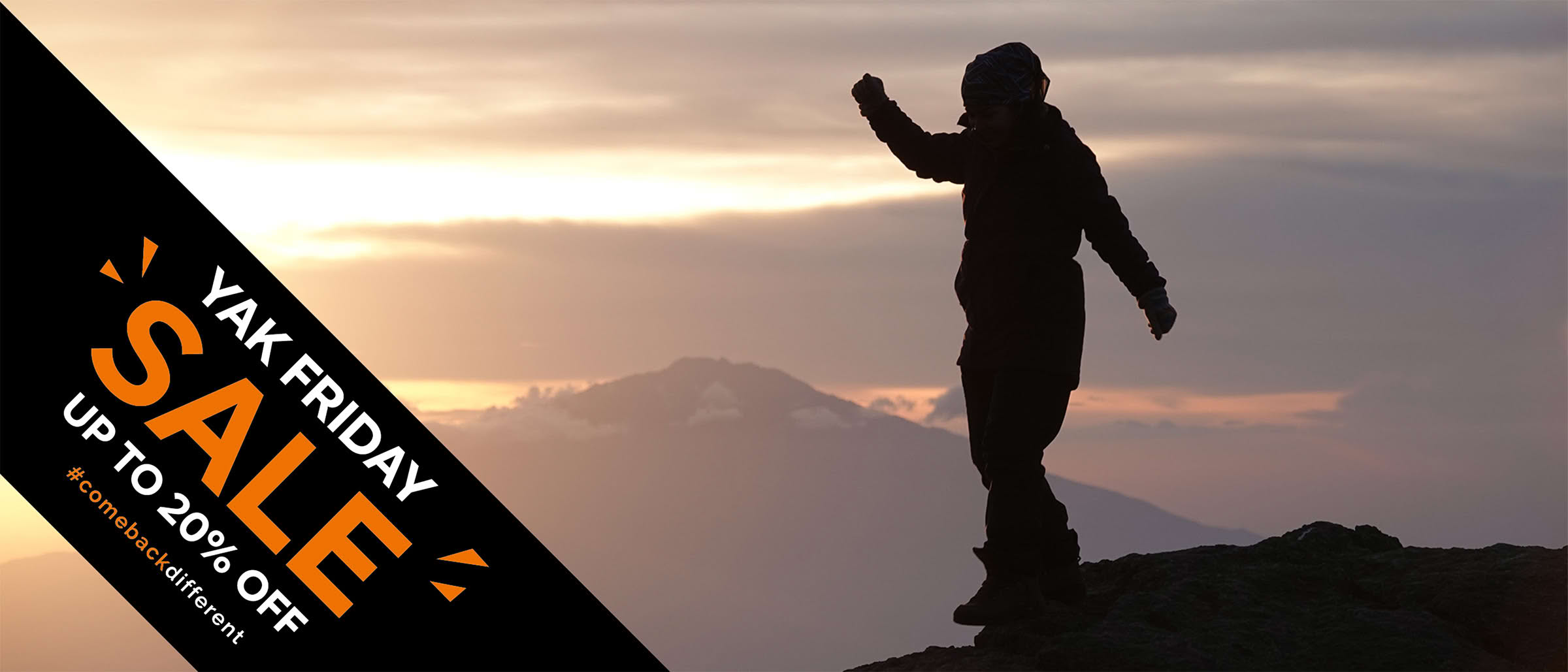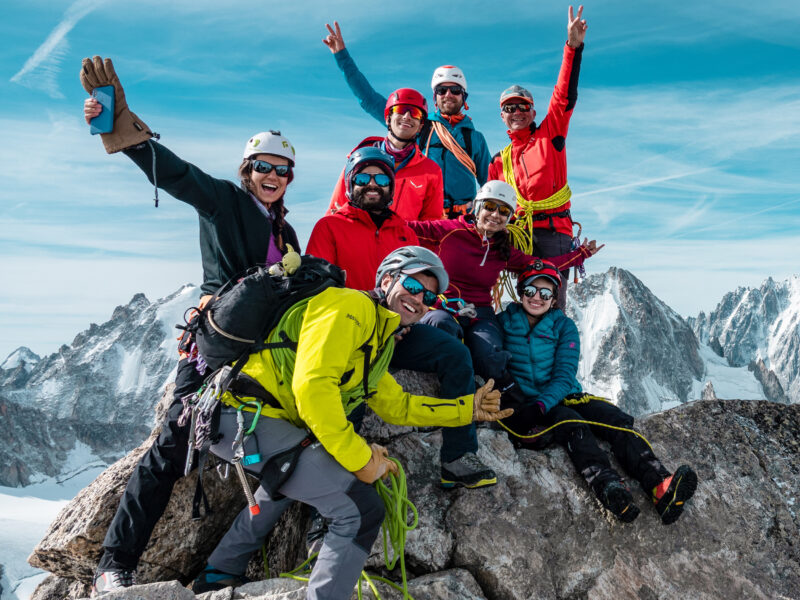BY Rami Rasamny | September 17 2025
How Should a Hiking Boot Fit?
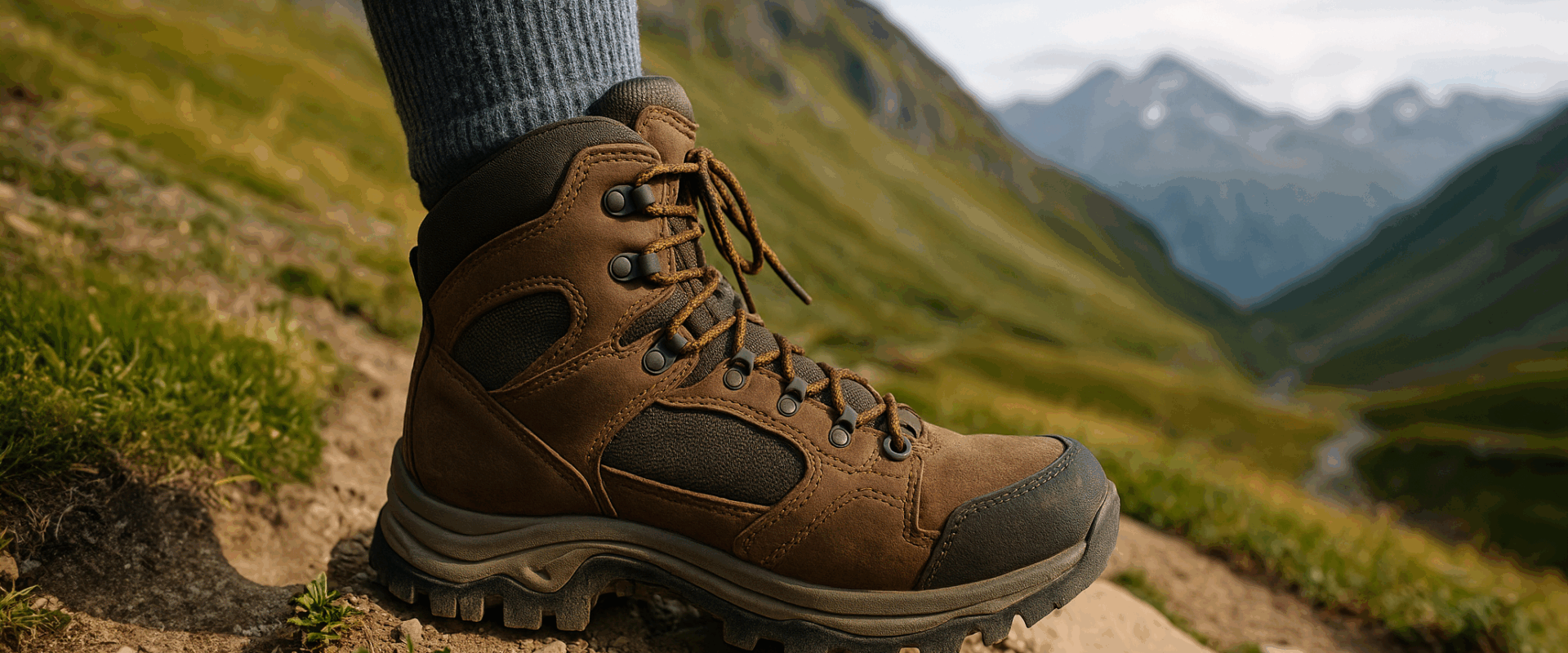
By Rami Rasamny, Founder of Life Happens Outdoors
There’s a certain magic in lacing up a brand-new pair of hiking boots. They carry the promise of journeys ahead, mountain trails, rocky ridges, forests, and alpine meadows. But that magic can fade quickly if the boots don’t fit properly. Blisters, black toenails, and aching feet can turn what should be a transformative experience into something you can’t wait to end.
Gone are the days when suffering for the adventure meant tolerating painful feet. Modern hiking boots are designed with comfort, performance, and durability in mind. The key is making sure they fit you perfectly. Whether you are preparing to Trek the Tour du Mont Blanc, Climb Kilimanjaro, or simply enjoy a weekend in the local hills, your boots are the foundation of every step you take. Here’s how to know if they’re ready to take you from trailhead to summit without a single blister.
1. The Heel Test: No Lifting Allowed
Your heel should feel secure inside the boot. When you walk uphill or take a step, your heel should not lift off the sole. Even a small amount of heel lift can lead to friction, which in turn causes blisters, a hiker’s worst enemy.
When trying on boots, lace them up properly and walk around, paying close attention to what your heel is doing. If it moves up and down, try tightening the laces or adjusting the fit. If that doesn’t fix it, the boot might not be right for you. A snug heel isn’t about tightness, it’s about security and stability.
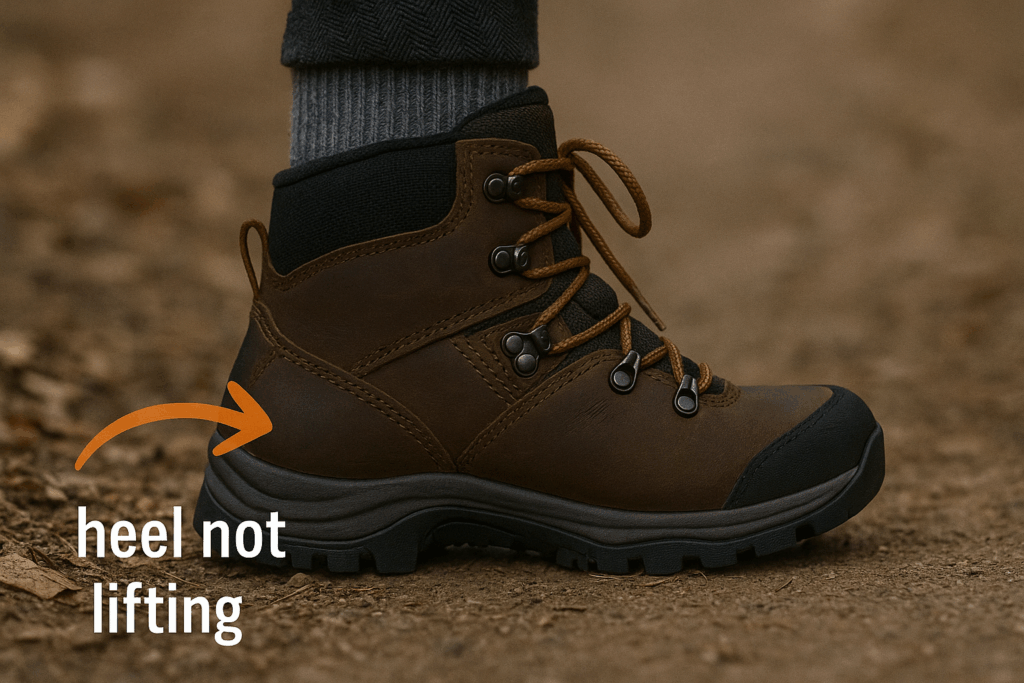
2. Toe Room: Keep Them Off the Front
Just as important as heel security is toe space. When you angle your foot downhill, think about descending a steep trail, your toes should not touch the front of the boot. This space prevents bruised toenails and discomfort, especially on long descents.
Here’s a simple test. Stand on an incline or mimic a downhill stance by leaning forward. If your toes hit the front, size up or adjust the fit. There should be enough room to wiggle your toes freely while still feeling supported.
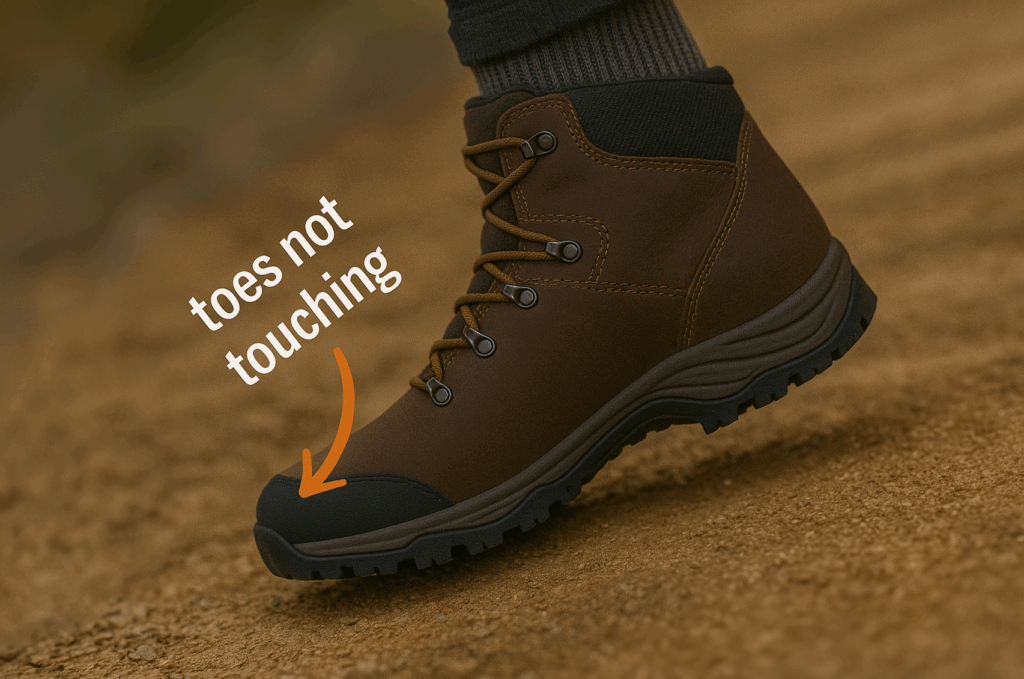
3. Try Boots With the Right Socks
Your socks are part of the fit equation. Always try on hiking boots with the same socks you plan to wear on the trail. Different sock thicknesses can drastically change how a boot feels.
If you tend to hike in a single pair of midweight merino socks, bring those. If you sometimes layer thin liners under thicker socks for extra warmth or blister prevention, try that setup as well. This way, you’ll know how the boots perform under real-world conditions.
4. Try Them at the End of the Day
Your feet naturally swell as the day goes on, especially if you’ve been walking or standing. That swelling is magnified on the trail during a long day of hiking.
By trying on boots in the afternoon or evening, you’ll get a better sense of how they’ll feel when your feet are at their largest. A boot that fits perfectly first thing in the morning might feel too tight by the time you’ve hiked ten miles or descended from a big climb.
5. Don’t Forget the Width
Fit isn’t just about length. The width of a boot is equally important. If the boot feels tight across the ball of your foot or pinches the sides, it’s not the right shape for you. Likewise, if it feels sloppy and loose, you risk losing stability on uneven terrain.
Many manufacturers offer boots in different widths, so don’t settle for close enough. A proper width ensures both comfort and control, giving you confidence on everything from muddy trails to rocky ridgelines.
6. Comfort Is Non-Negotiable
Hiking boots shouldn’t require a painful break-in period. While some stiff mountaineering boots do take time to soften, the days of bleeding heels and blistered toes are behind us.
The right hiking boot should feel good the moment you put it on. There’s a difference between supportive and uncomfortable, and your feet will know it. If the boot pinches, rubs, or causes discomfort in the store, it will only get worse on the trail.
Your Adventure Starts With Your Feet
At Life Happens Outdoors, we believe that your journey begins the moment you lace up your boots. A well-fitting pair of hiking boots allows you to focus on the experience, the sweeping views, the camaraderie, the challenge of the climb, without being distracted by pain or discomfort.
Whether you are setting out to Trek the Tour du Mont Blanc through the breathtaking Alps or preparing to Climb Kilimanjaro on Africa’s highest peak, the right boots will carry you there in comfort and safety.
So take the time to find the perfect pair. Pay attention to the details: secure heel, free toes, the right socks, and the perfect width. Your feet carry you to places few people ever see. Treat them well, and they’ll take you further than you ever imagined.
Because when you’re out there, it’s not about just reaching the summit. It’s about the journey and making sure you come back different, not limping.
About The Author
Rami Rasamny is the founder of Life Happens Outdoors, a premium adventure travel community dedicated to transforming lives through curated outdoor experiences. A mountaineer and entrepreneur, Rami has led teams on some of the world’s most challenging peaks, from the Alps to the Himalayas. His mission is to make adventure accessible, transformative, and safe for all who seek to push their limits and Come Back Different.
About Life Happens Outdoors
At Life Happens Outdoors, we believe in the power of nature to transform lives. As proud members of the Adventure Travel Trade Association (ATTA) and the World Travel & Tourism Council (WTTC), our team of certified guides and outdoor professionals is committed to the highest standards of safety, sustainability, and excellence.
Discover more about our story and mission on our Meet LHO page, or explore our curated adventures such as the Tour du Mont Blanc Trek, the Climb of Kilimanjaro, and Chasing the Northern Lights.









